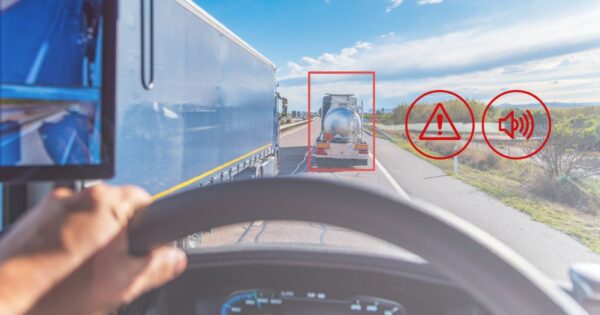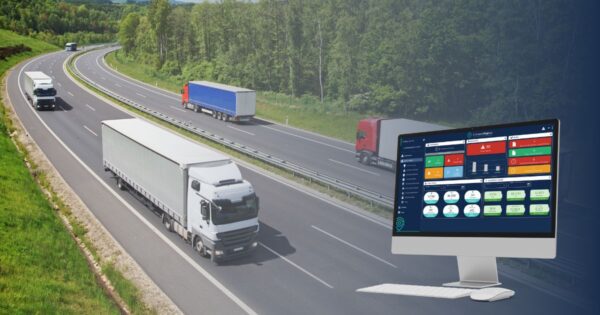The way we get from A to B is changing. And so is the way we deliver things from A to B. As awareness of climate change enters the mainstream, all of us are under pressure to do what we can to decarbonize and seek new efficiencies. In many cases, we aren’t being asked, but being told: that governments and international bodies around the world are setting targets and meeting them isn’t an option.
That’s the challenge. The good news is that technological advances can help us. Most obvious perhaps is the rise of electric vehicles. But there are others, including smarter telematics and AI-powered insight that can also help us operate more efficiently.
The goal is green fleet management. But before going further, let’s ask ourselves exactly what that means.
What is green fleet management?
Fleet management, in its broadest sense, is the management of vehicles. A huge number of organizations, certainly not limited to transportation companies, own or manage vehicles and drivers. From family restaurants to global construction companies: fleet management is ever-present.
Green fleet management especially is, as the name suggests, the operation of those vehicles in a way that considers both the broader environmental impact as well as the narrower benefits to the organization itself (although these are often aligned, as we will see below). “Environmental impact”, at the risk of spending this entire post defining terms, could be seen both in terms of carbon emissions, but also within the context of broader ESG goals – including ‘Vision Zero’ for example – the aim to reduce serious injuries and deaths on our roads to zero.
Before looking at how green fleet management can make that happen, or at least get us part of the way there, let’s briefly discuss why it matters.
Why green fleet management matters
Firstly, and most obviously, most of the population, which includes most employees of fleet-operating businesses, believe in preserving our natural environment and ensuring that planet Earth remains a place worth living in. This isn’t the place to deliver a lecture on global warming, let’s just acknowledge that it represents a significant challenge to humanity in which fleet managers are better positioned than most to play a meaningful part.
Instead, I would make two arguments for the importance of green fleet management.
First, as mentioned above it often aligns with business objectives anyway. It’s hard to emit less carbon without burning less fuel, and as every fleet manager knows, fuel is expensive. Second, as the regulatory landscape changes, it is becoming imperative to understand the emissions profile of any business and be able to meet targets as they evolve, and as the world evolves towards net zero. That cannot be done without having some form of green fleet management infrastructure in place: one that helps measure emissions and reduce those emissions.
On that basis, what does an effective strategy look like?
Green fleet management: 5 practical steps to an efficient, sustainable fleet
- Make a cultural change
The first step is both the easiest and the toughest. Beyond the buzzwords and platitudes, successful green fleet management means a real commitment to changing the way we do business. It means prioritizing efficiency and ensuring that the leadership team is measured according to sustainability targets as well as more conventional success metrics. Without a business aligned around sustainability goals, most green fleet management efforts are liable to flounder.
- Focus on fuel efficiency
Sure, you should be doing this already. But at the very heart of any green fleet management strategy must be a commitment to using less fuel. What does that mean in practice? Firstly, ensure you are reporting fuel usage properly and correctly. Identify drivers or vehicles that are not performing as they should and be proactive around driver training to improve performance and remove damaging habits (a solution like CameraMatics can help). In our experience, systematically focusing on fuel consumption can reduce fuel usage by 15% – with an equivalent reduction in emissions and costs of course.
- Transition to electric vehicles: the right way
Fundamental to a green fleet is the composition of that fleet. The transition to electric is underway, and it is likely to play a fundamental role in helping businesses (and certainly those managing large fleets of vehicles) to meet their sustainability targets. But managing that transition is tough. It is vitally important to understand when to transition each vehicle type, and what the right choice for a replacement is. Again, a clear understanding of vehicle and fuel usage patterns will help make those calls.
Of course, just as with their ICE counterparts, electric vehicles need to be monitored for power use, and can be responsible for more or less emissions based on how they are driven. The transition is just the start of the journey.
- Optimize both fleet size and vehicle size
Green fleet management starts with the fleet itself. And the simple fact is that most fleets are too big. Vehicles are left idling or unused for prolonged periods or are used inefficiently in terms of routing. The result is spent: in terms of fuel, in terms of vehicle costs, and in terms of maintenance. And it also adds up to more emissions than should be necessary. With that in mind, constantly review fleet usage, idling time, and vehicle use over time to ‘right-size’ your fleet. Be aware, however, that smaller isn’t always better. Too few vehicles and you may find yourself using vehicles too large for specific jobs or taking long expensive routes to get to jobs.
- Manage maintenance proactively
Poorly maintained vehicles are inefficient vehicles. But when operating a large fleet, it can be difficult to proactively manage maintenance in order to ensure your vehicles are always operating at their best. For as green a fleet as possible, invest in automated maintenance scheduling software, telematics systems that identify issues with vehicles before they might become apparent, and the tools that help drivers and maintenance workers meet maintenance regulations with ease.
Green fleet management isn’t just good for the planet. It isn’t just a requirement to meet emerging regulatory requirements. It is also good for business. We’ve only looked at 5 initial steps in this blog: in truth green fleet management is a way of life. The most important thing is taking that all important first step and committing.








